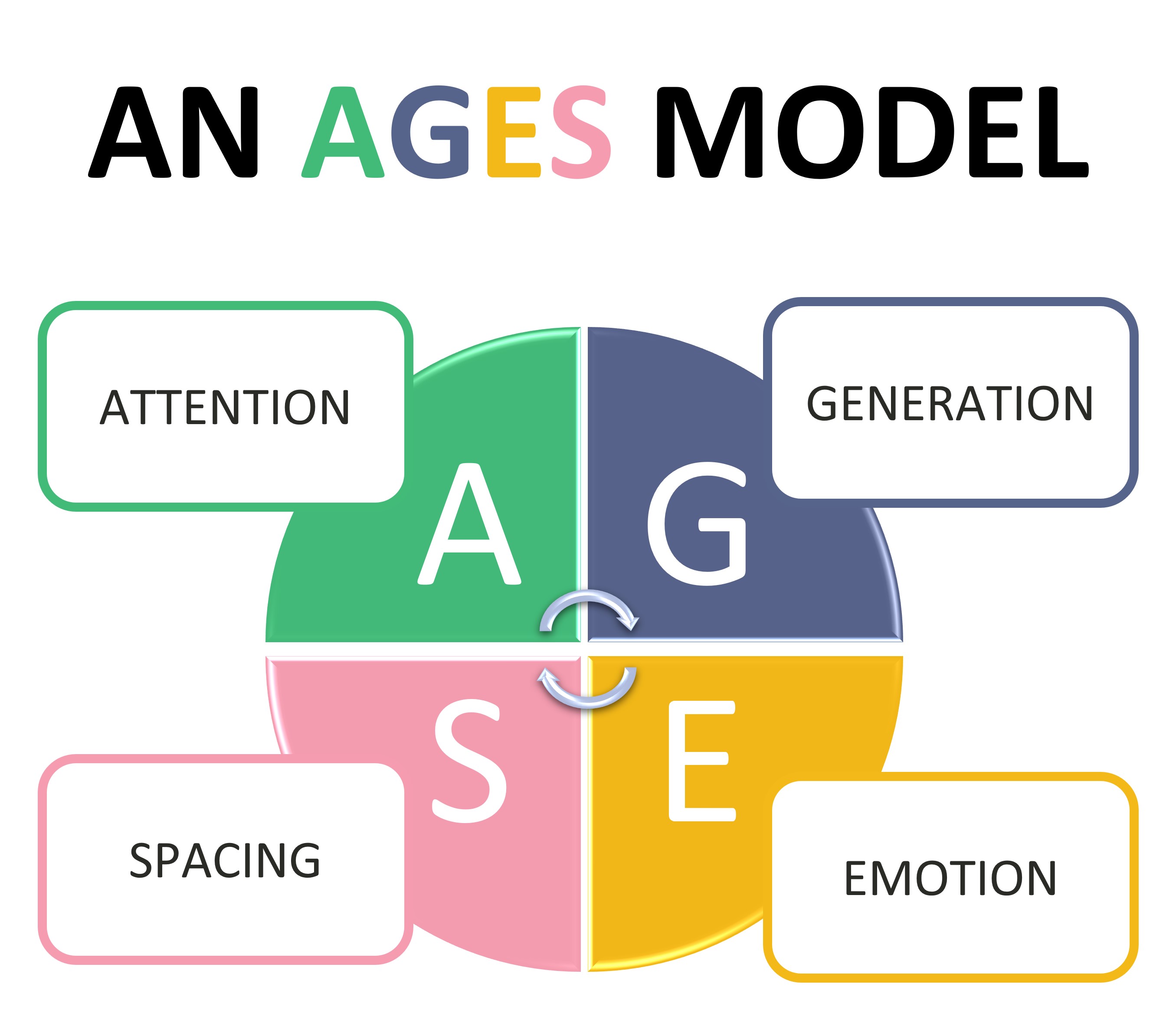Apply the AGES Model
Jul 28, 2022
And to support these never-ending changes and transformations in the Learning and Education sector, neuroscientists work relentlessly and come up with new theories and models to explain how to design learning that optimizes the use of the learner’s brain to maximize learning. One such model we are going to discuss today in this article is AGES Model.
AGES stands for – Attention, Generation, Emotion, and Spacing. The discoveries in neuroscience and cognitive psychology have helped researchers identify these four variables to be considered for impactful e-learning solutions.
Let’s see how we can implement the AGES model in our e-learning design.

Attention
For learning to happen, the learners must pay attention to the content presented. Below are the ways you can grab and retain the learner’s attention.
- Help learners know their ‘why’. Learners pay attention only if they are motivated to learn and know why it is important for them to take the course. To tap into the learner’s ‘why’, we can include questions like – Why do you want to take the course? How do you think it will benefit you? Etc. even before the course starts.
- Follow 20 mins rule. Research has shown that no matter how much we try, we cannot focus our attention on one thing for more than 20 mins. So, while designing your learning, break up the content into sections not more than 20 minutes long. Even in those 20 minutes, keep things changing and moving.
- Include variety. Use different modalities – videos, animation, text, audio, graphics, images, etc. Include activities like – drag and drop, simulations, scenarios, games, online discussion, real-world examples, practice activities, assessments, etc.
- Include short breaks. Introduce pause activities like – listening to music played on the screen for a minute or two, deep breathing while the timer is on, or a reminder to go and fetch a glass of water to drink, etc.
- Make use of the progress bar. Always keep your learners informed about how much of the content is finished and how much is left to be completed. This keeps learners motivated and encourages them to reach the finish line.
Generation
The retention and retrieval of information happen, and memories are formed when the learner can generate an association between the information they are learning and the information that is already stored in their brains. We should design our learning in such a way that it will help to generate more associations in the learner’s brain. This can be done by -
Making learners own the content. Give learners space, time, and opportunity to reflect upon and make sense of what they have learned. This can be done in various ways. Ask them to elaborate on the concept. Give them some time to jot down their thoughts on the concept. Give them the case study to solve by applying the newly learned concept. Ask them to research the related topics. Even writing an essay or an article, doing a presentation or a group discussion, etc. will help form meaningful connections and insights about the topic in the learner’s brain, which will eventually enhance learning, retention, and recall.
Emotions
Emotions – is the third variable in the AGES model. Man is an emotional being. Emotions reside in the same brain where logic, knowledge, and information reside. Hence, we cannot separate emotions from learning. Research shows that a negative emotional state of the learners can hamper their learning. Whereas a positive emotional state boosts learning. That is the reason why it is important to design learning in such a way that it arouses learners’ positive emotions. We can achieve this by –
- Give positive feedback. Choose positive and encouraging words even for informing the learners about their wrong answers. Instead of saying – “Your answer is wrong!”, say something like – “Nice try! You are very close to the correct answer. Would you like to try again?”
- Introduce gamification elements. Games amplify positive emotions. Include gamification concepts like – gathering points or coins, winning badges, attaining mastery levels, collecting ratings, etc.
- Create opportunities for social interaction. Man is a social animal. He learns from peers and collaboration with like-minded people is found to enhance learning. Design learning in a way that incorporates social activities like group presentations, group discussions, building learning communities, brainstorming, idea sharing, blogging, etc.
Spacing
Learning is rarely a one-time thing. We must keep revising our knowledge to make learning permanent and retained. This is where the fourth and final variable of the AGES model, i.e., spacing comes into play. The spaced learning and spaced retrieval of learned information is a key to better retention and recall. We can implement this in our e-learning by -
Spacing out content. Instead of designing an hour-long session, breaking it up into 20 minutes chunks spread over a few days. And then use micro-learning to reinforce the learning over the next few weeks. Microlearning can have a summary of the content, quiz, assignments, etc.
Thus, using the AGES model, we can effectively design new-age learning for our new-age learners. By making use of this model in our e-learning design, we can improve learners’ attention and engagement, help them generate new ideas and insights, and arouse their emotions and motivation to enhance retention.
Written By: Devolina Deshmukh
Connect with Devolina here.
Stay connected with news and updates!
Join our mailing list to receive the latest news and updates from our team.
Don't worry, your information will not be shared.
We hate SPAM. We will never sell your information, for any reason.


